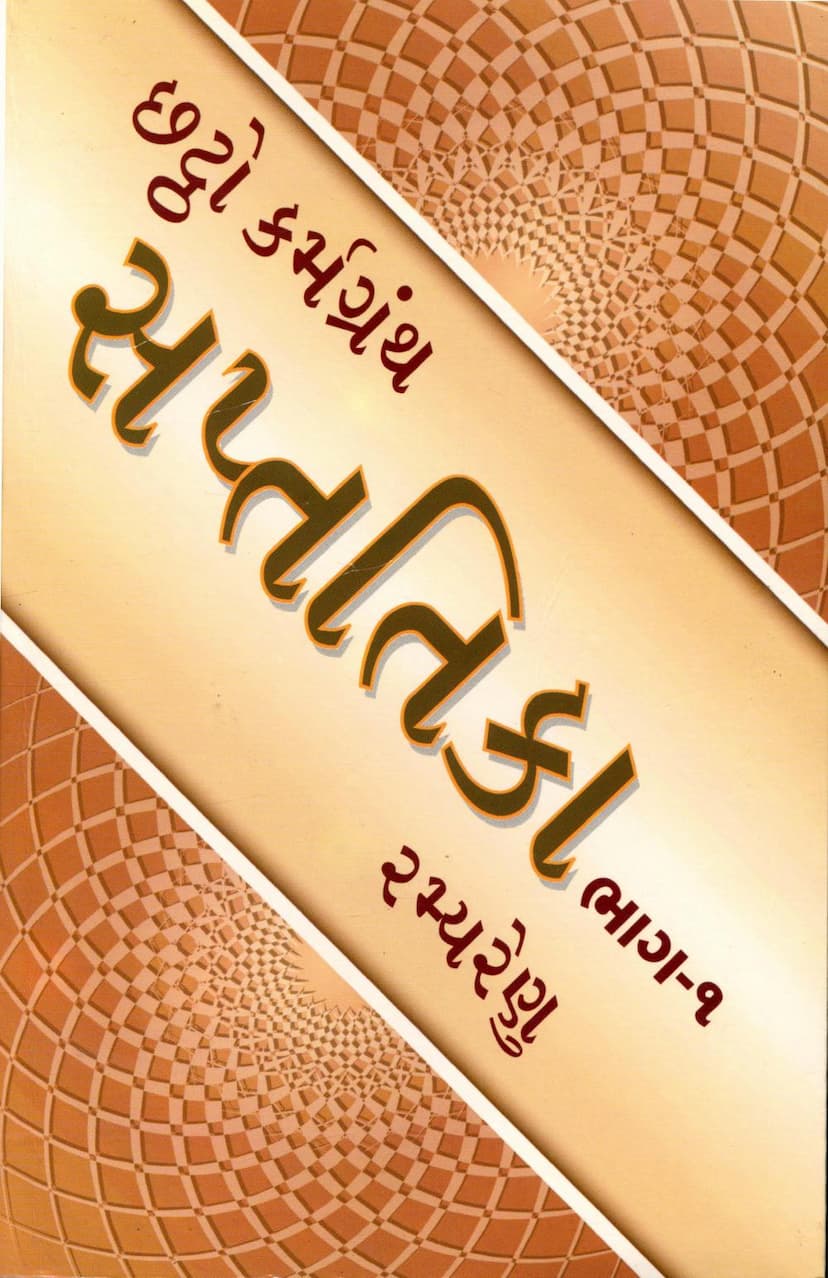Saptatika Part 01 Shashtam Karmgranth
Added to library: September 2, 2025

Summary
The provided text is the first part (Bhag 01) of a Jain text titled "Saptatika Part 01 Shashtam Karmgranth" by Ramyarenu, published by Umra Jain S M P Sangh. This volume focuses on the Sixth Karmagranth (Sixth Treatise on Karma).
Here's a summary of the content based on the provided pages:
Overall Structure and Content:
The book appears to be a detailed exposition of Jain karmic theory, specifically focusing on the "Sixth Karmagranth." It meticulously breaks down the concepts of karma, their bindings, manifestations (udaya), and persistent states (satta). The text utilizes the framework of Jivasthanak (states of souls) and Gunashthanak (stages of spiritual development) to analyze these karmic processes.
Key Themes and Concepts Covered:
-
Introduction and Blessings: The book begins with invocations to deities like Lord Shankheshwar Parshvanath, Gautam Swami, and the spiritual lineage of Gurus (Bhadrasurishwarji Maharaj, Karasurishwarji Maharaj, Chandrayashvijayji Maharaj). It also includes dedications and acknowledgments to donors and spiritual guides.
-
The Nature of Karma: The foundational verses (Mangalacharan) and subsequent explanations define "bandha" (bondage), "udaya" (manifestation/experience), and "satta" (potential/possession) of karma.
- Bandha: The process of karmic particles adhering to the soul.
- Udaya: The experience of the results of karma.
- Satta: The state of karmic particles residing with the soul, awaiting their manifestation or undergoing modifications.
-
Categorization of Karma: The text distinguishes between Mulkarma (root or primary karmas) and Uttara Prakriti (subsequent or secondary karmic natures).
- Mulkarma: The eight primary types of karma (Jnana-avaraniya, Darshana-avaraniya, Vedaniya, Mohaniya, Ayushya, Nama, Gotra, Antaraya).
- Uttara Prakriti: The numerous sub-categories within each of the Mulkarmas.
-
Analysis through Jivasthanak and Gunashthanak: A significant portion of the book is dedicated to analyzing the "samvedh" (conjunction or relationship) of Mulkarmas in relation to:
- Jivasthanak: The 14 classifications of souls based on their sensory capabilities, consciousness, and stages of development (e.g., Ekendriya, Dvi-indriya, Trasa, Sangni, Asangi, etc.).
- Gunashthanak: The 14 stages of spiritual progress from the lowest (Mithyatva) to the highest (Sanyogi Kevali, Ayogi Kevali).
-
Detailed Breakdown of Mulkarmas: The text systematically details the following for each Mulkarma:
- Bandhasthan (States of Bondage): The specific combinations of karmas that can be bound simultaneously.
- Udayasthan (States of Manifestation): The specific combinations of karmas that can manifest at any given time.
- Sattasthan (States of Possession): The specific combinations of karmas that remain in potential with the soul.
- Samvedh (Conjunction): The intricate relationships and interactions between these states across different Jivasthanaks and Gunashthanaks. This involves analyzing various bhanga (combinations or variations).
-
Specific Karmas and Their Analysis:
- Moolkarma: The text begins by detailing the bandhasthan, udayasthan, and sattasthan for the eight root karmas. It explains the number of karmas bound, the number in manifestation, and the number in potential at different stages. It also discusses the swami (beings who undergo these states) and kaal (time duration) associated with these states.
- Jñanavaraniya and Antaraya Karma: A detailed analysis of the five common uttara prakritis for these karmas.
- Darshanavaraniya Karma: An explanation of its nine uttara prakritis, their bondage, manifestation, and possession across various stages and classifications.
- Vedaniya Karma: The analysis of the two types of feelings (pleasant and unpleasant) and their states.
- Ayushya Karma: A complex explanation of the four types of lifespans and their intricate relationships with states of bondage, manifestation, and possession across different Jivasthanaks and Gunashthanaks, involving numerous bhangas.
- Nama Karma: An extensive section covering the numerous uttara prakritis of Nama Karma, including their classification (e.g., related to species, body, senses, consciousness, form, color, sound, etc.) and detailed analysis of their bondage, manifestation, and possession in relation to Jivasthanaks, Gunashthanaks, and various marganas (paths of analysis). The text meticulously lists the bandhasthan, bandhabhanga, udayasthan, udayabhanga, and sattasthan for Nama Karma.
- Gotra Karma: An explanation of uchcha gotra (high lineage) and neech gotra (low lineage) and their states.
- Mohaniya Karma: This is a highly detailed section covering the 28 uttara prakritis of Mohaniya Karma, including its 22 states of bondage (bandhasthan), 9 states of manifestation (udayasthan), and 15 states of possession (sattasthan). It delves into numerous bhangas across different Jivasthanaks, Gunashthanaks, and marganas (like sensory faculties, mind-speech-body karma, passions, cognitive powers, conduct types, and species classifications).
-
The Structure of the Table of Contents: The detailed table of contents (Vishayanukram) reveals the methodical approach, covering each type of karma (Mulkarma and Uttara Prakriti) and then analyzing their bandha, udaya, and satta in relation to Jivasthanak, Gunashthanak, and 62 Marganas.
Methodology:
The book employs a highly systematic and analytical approach, typical of Jain philosophical texts on karma. It presents complex information in a structured manner, often using tables to illustrate the intricate interplay of karmic states across various classifications of souls and spiritual stages.
Spiritual and Philosophical Context:
The ultimate goal of this detailed analysis of karma is to understand the causal mechanisms of worldly existence (samsara) and to provide a roadmap for liberation (moksha) by understanding how to minimize the influx of new karma (asrava) and shed existing karma (nirjara). The text emphasizes the importance of correct knowledge and practice to navigate the karmic realm effectively.
In essence, "Saptatika Part 01 Shashtam Karmagranth" is a profound and exhaustive treatise on Jain karma theory, providing a detailed roadmap of how karmas operate in relation to the soul's journey through different states of existence and spiritual progress.